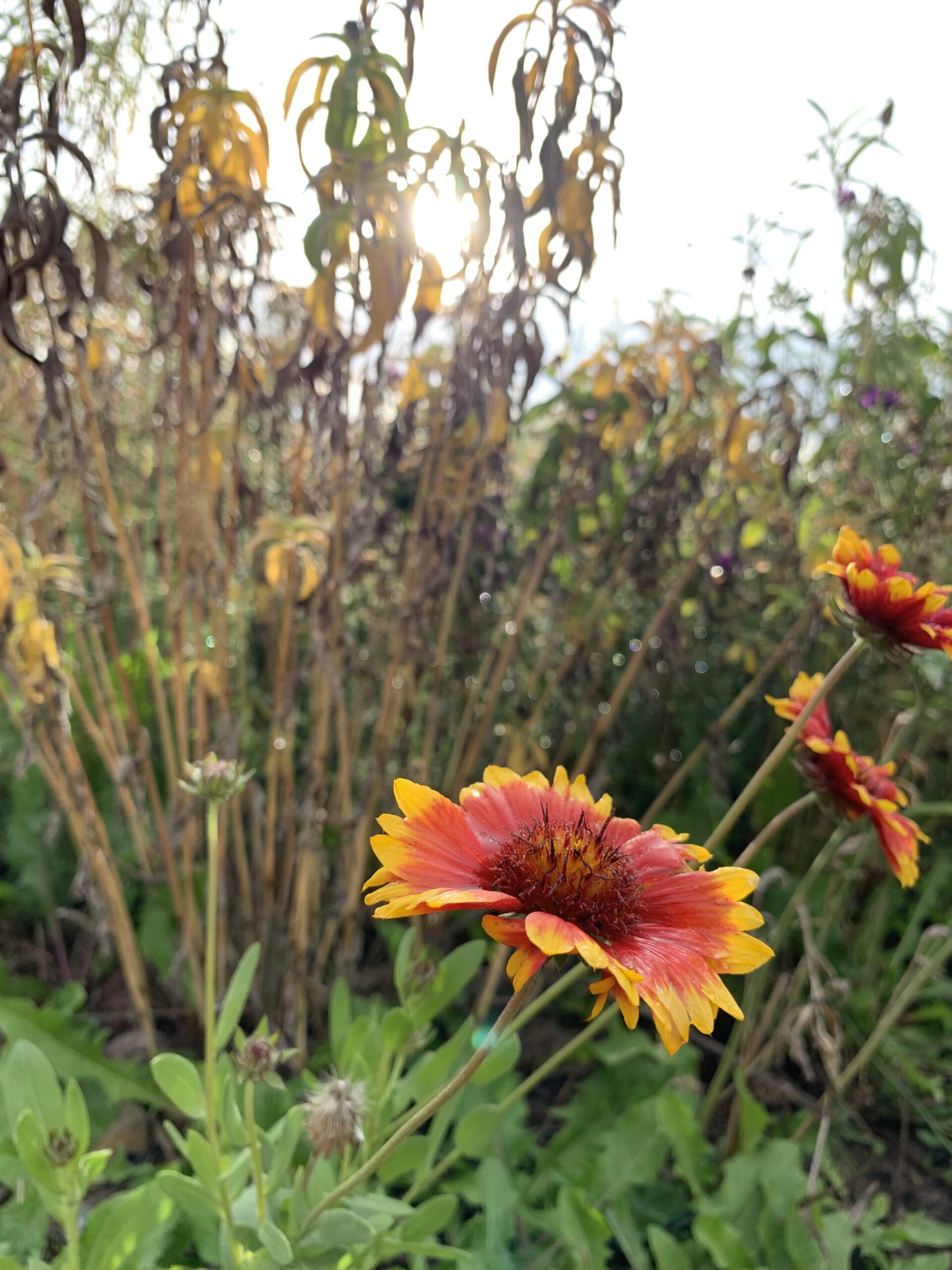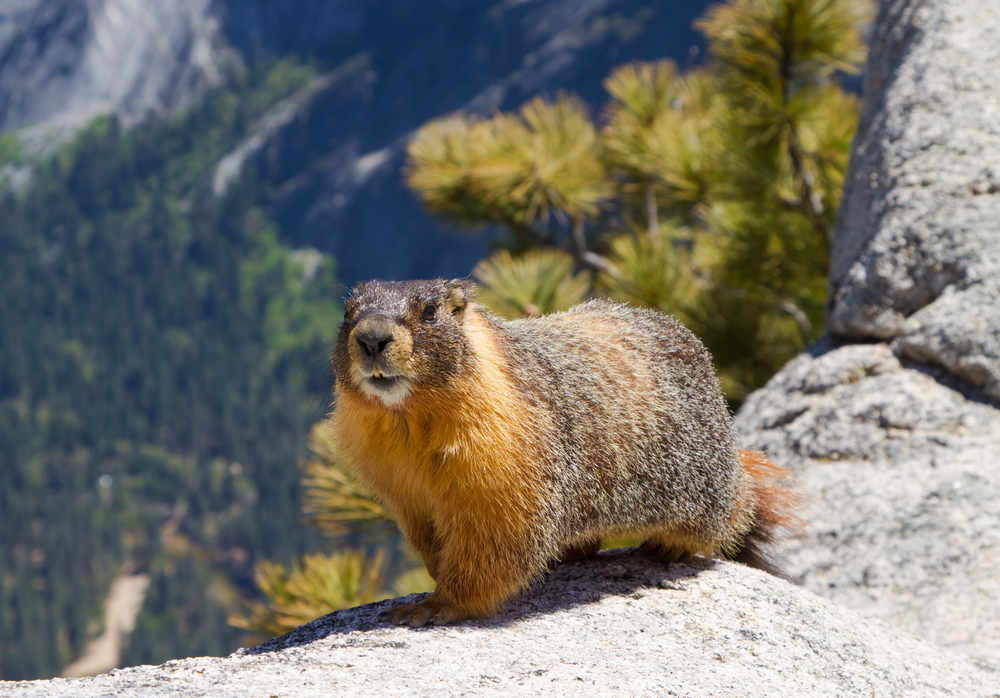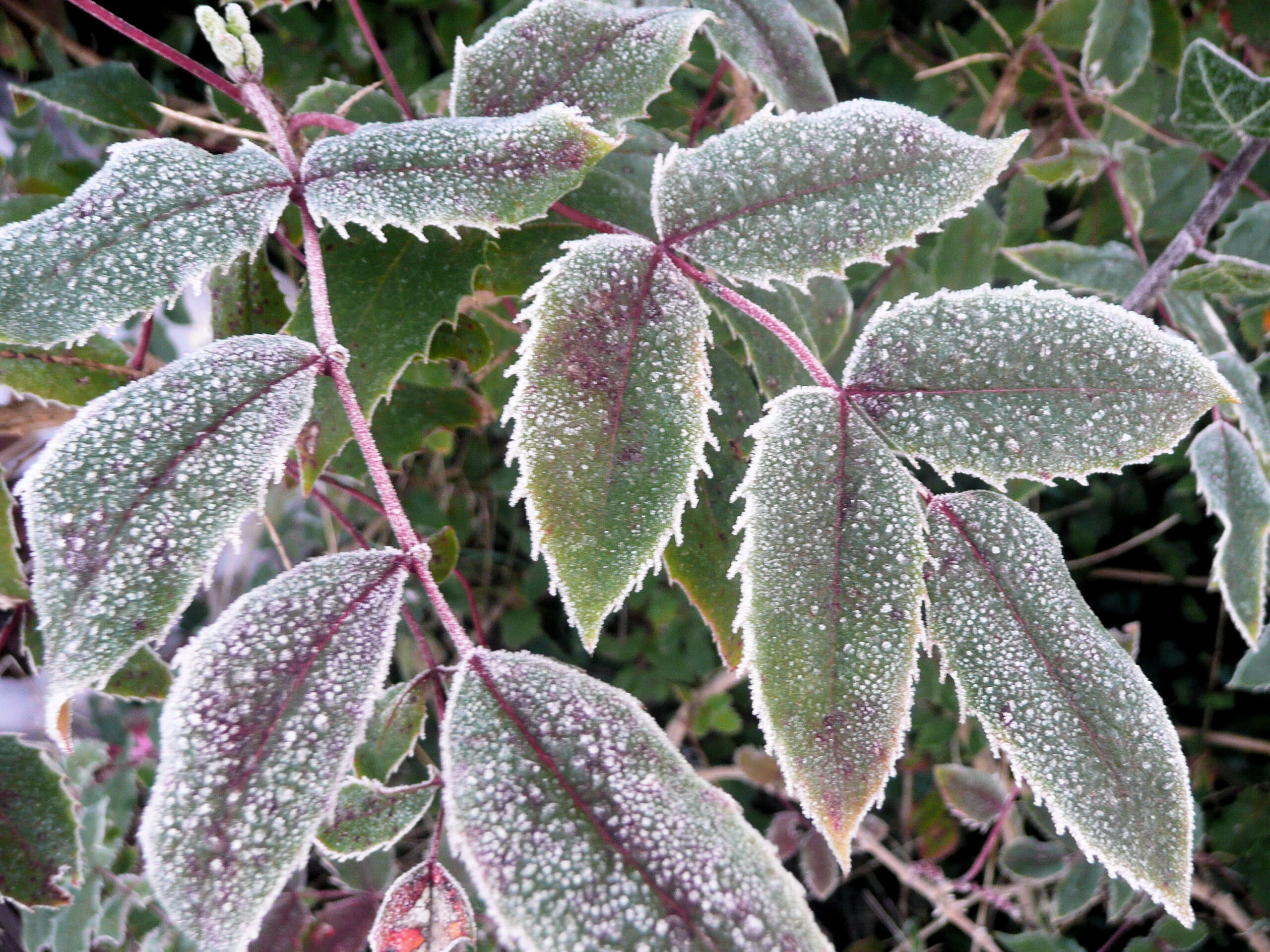By Jessie Walthers, Conservation Program Manager Groundhog Day. Who doesn’t love this most random of…

Fall Garden Tips to Help Your Native Pollinators and Birds
Fall is here! The leaves are falling and our gardens are full of brown, stalky, dried-up plant remains. While we may feel the urge to rake out and clean up garden beds to prepare for winter, leaving these materials in your garden until spring will provide important habitat for local pollinators and bird species.
Most native pollinators in Montana do not migrate, but overwinter here in their egg, nymph, pupa, or adult stages underground or in leaf litter on the forest floor. Allowing plant debris to remain in your garden through the winter provides vital protection for these creatures.
Here are a few tips to help local birds find food and pollinators to survive the winter months in your garden:
First, to provide a source of food late into the season, select plants that will bloom through the fall. Sunflowers and blanket flowers are good choices for their late blooms. Planting native flowering shrubs will support the pollinators and will produce berries into the fall which provide important forage for native birds.
When they’ve finished blooming, let the stalks and seed heads of native wildflowers and grasses remain in your garden. Many pollinator species, like swallowtail butterflies, will over-winter in the hollow stalks of plants or attached to the species they forage on in the summer, so let them stand and forgo the urge to cut everything to the ground.
These seed heads will attract birds to your yard so you can enjoy their activity without using bird feeders, which can attract bears. In addition to the benefits for local wildlife, these native wildflowers, grasses and berries provide beautiful shapes, colors, and visual interest in your garden through the frosty and snowy months.
Allowing fallen vegetation and leaves to remain in garden beds provides important areas for insects to bed under or attach cocoons to. Native bumble bee queens usually spend the winter hibernating under leaf litter or in compost piles. As an added benefit, the leaves and plant material create a mulch layer in your garden which helps maintain soil moisture and provides important nutrients.
As spring approaches and things start to melt, leave the woody plant debris and leaves until local native species start flowering in the spring naturally. Usually, early flowers start blooming in our area by late April. This is the sign the pollinators will be emerging, as there will be food available for them to start to forage. Raking and clean-up can begin once they are out and active and have a food source.
So, while it might be tempting to blitz your garden beds this fall to have them looking neat and tidy as we head into winter, let them stay a little unruly until spring. You’ll provide important habitat for the pollinators that will bless your garden this spring and summer. These plants will provide abundant food for birds this winter as well. So, sit back and put your feet up instead of clearing out those beds, and know you’re working hard to help your pollinators.
This Post Has 2 Comments
Comments are closed.




I love that idea of sitting back and letting your fall garden debris do it’s work.
You might like to make an attractive sign:
👩🏼🌾
🍂 RELAX ❄️
GARDEN AT WORK
🐝 🐛🦋
I can do this! Thank You for explaining about pollinators’ habitat and behavior! Encouraged by contributing more by doing less”!